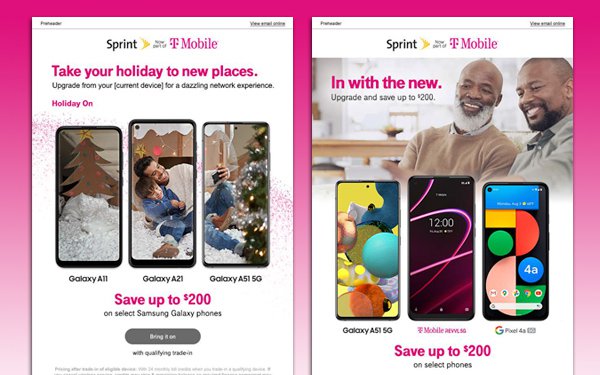In today’s fast-paced world, communication is king. We rely on a constant flow of information, and text messages often reign supreme for quick exchanges. But what if you need to send a message to a T-Mobile phone number and traditional texting isn’t an option? Fear not, for there’s a hidden gem waiting to be discovered: emailing a T-Mobile number.
This article dives deep into the world of T-Mobile email-to-text, exploring the “how-to” alongside valuable insights and alternative solutions.

Unlocking the T-Mobile Email Gateway:
T-Mobile, like most major carriers, offers a convenient feature known as an email-to-text gateway. This gateway allows you to send text messages directly to a T-Mobile phone number using your regular email client. No fancy apps or additional subscriptions needed!
Here’s the magic formula:
- The Email Address:The key lies in constructing the recipient’s email address correctly. Simply take the T-Mobile phone number (minus any dashes or spaces) and append it to “@tmomail.net.” For example, to send a text to the number 555-123-4567, you’d use the email address [email address removed].
Important Considerations:
While email-to-text is a handy tool, there are some crucial factors to keep in mind:
- Delivery Limitations:Messages sent via email-to-text may not be delivered instantly like traditional SMS. Depending on network traffic and the recipient’s phone settings, there could be a slight delay.
- Message Length:T-Mobile email-to-text messages have a character limit, typically around 160 characters (similar to an SMS). This aligns with the standard text message format.
- Multimedia Restrictions:Unlike standard text messages, email-to-text doesn’t support sending pictures, videos, or other multimedia content. The message content is restricted to plain text.
- Carrier Compatibility:This email-to-text functionality is exclusive to T-Mobile subscribers. If the recipient uses a different carrier, the message won’t be delivered.
Crafting Your Email-to-Text Message:
Now that you understand the basics, let’s explore how to compose your email-to-text message:
- The Subject Line:The subject line isn’t mandatory, but it can be a helpful way to grab the recipient’s attention. Keep it concise and informative, like “Quick question” or “Meeting reminder.”
- The Message Body:Compose your message as you would a regular email. Remember the character limit and keep it brief and to the point.

Sending the Email:
Once your message is crafted, simply send the email using your preferred email client. The message will be routed through T-Mobile’s email-to-text gateway and delivered to the recipient’s phone as a text message.
Alternative Avenues for Communication:
While email-to-text offers a unique option, here are some alternative communication methods to consider:
- Direct Texting:If you have the recipient’s phone number saved in your contacts, you can always send a traditional text message through your phone’s messaging app.
- Messaging Apps:Popular messaging apps like WhatsApp or Facebook Messenger allow you to send messages to phone numbers, even if they’re not saved in your contacts (provided the recipient also uses the app). These apps often offer additional features like file sharing and video calls.
- Social Media:Depending on your relationship with the recipient, social media platforms like Facebook or Twitter can be used for quick communication.
The Future of Mobile Communication:
The way we communicate is constantly evolving. Emerging technologies like RCS messaging (Rich Communication Services) promise a richer experience, blurring the lines between text messages and online chat applications. This technology will likely offer features like improved message formatting, file sharing capabilities, and potentially even read receipts.
Conclusion:
Email-to-text for T-Mobile numbers provides a convenient way to send messages when traditional texting isn’t an option. However, it’s essential to be aware of its limitations. By understanding the “how-to” and exploring alternative communication methods, you can ensure seamless communication regardless of the situation. Remember, the key is to choose the communication channel that best suits your needs and ensures timely and effective message delivery.
لا تعليق